- Home
- Neal Stephenson
Twelve Tomorrows - Visionary stories of the near future inspired by today's technologies Page 2
Twelve Tomorrows - Visionary stories of the near future inspired by today's technologies Read online
Page 2
Then Michael Crow, who’s the president of Arizona State and who was on the same panel as I was, accused science fiction writers, as a class, of “slacking off.” He said engineers and scientists have got the tools, the enthusiasm, and the brains, “and all you guys are doing is turning out this kind of depressing dystopian picture of the future.” So to call his bluff, we started this project, which is still taking shape, but whose idea is to round up some science fiction writers—some of whom might be the usual suspects, some of whom may not be so usual—and get them to write new science fiction stories in a more techno-optimistic vein. And preferably depict changes, new ideas and new technologies, such that someone graduating from MIT could read a story and say, “Okay, this doesn’t exist today, but if I start working on it now, by the time I retire, maybe it will exist.”
Q:Your novels often depict secretive societies, and subcultures or badass cabals of intellectually curious individuals, as agents of change and renewal. When you reflect upon our current challenges, who do you believe is actually there, ready to help?
A:I’m hesitant to try to impose a big theory on how to change the world. Because they frequently don’t end very well. I tend to see things more in general tendencies rather than big theories. But I’ve done a lot of thinking in the past year about what the problem is. In the case of alternative space launch technologies—which is something I’ve devoted a shocking amount of time to thinking about—there are a million ideas for different kinds of rocket engines and launching technologies. Many of them are great ideas technically. There’s plenty of talent in place to realize them. The reason that none of them happen turns out to be insurance.
Q:Insurance! How so?
A:Well, the existing launch vehicles and engines have track records. If you’re putting a billion-dollar object on top of one of these things, you want a predictable rate of failure so you can get it insured. If you come up with a new launch technology, it may be a lot better in every way, but you’re not going to be able to insure your expensive payload. So maybe where we need to look for innovation and change is not at places like MIT, but wherever they educate insurance company people. Or maybe some MIT people need to go into the insurance industry instead of writing code. [Nervous laughter from the audience.]
Q:You can take some justifiable pride in the accuracy of some of your predictions. What do you think you’ve gotten wrong? Or, put another way: what has surprised you?
A:The whole prediction thing is kind of a rigged game. In science fiction, there’s a shotgun effect, where you’re just predicting all kind of things, and then a few of them come true—or can somehow be interpreted as having come true—and then you can take the credit. People tend not to notice all the stuff you got wrong. For example, the case of the Metaverse in Snow Crash. To me, that’s all wrong, because I predicted a scarcity that didn’t materialize: in the Metaverse there’s a place called The Street, which has the most high-value real estate, and it’s where all the cool people are. The way that the Web developed is the opposite of that, as all URLs are pretty much created equal. Some are easier to type, but that’s a pretty small advantage in the big scheme of things.
Q:One of your great talents is your ability to observe current technological trends and extrapolate from them. How did you train yourself to do that?
A:It mostly started with Snow Crash. I’d gotten interested in three-dimensional graphics—I had friends who were working in that field. I remember seeing one of those classic ray-trace pictures of a bunch of floating mirrored spheres with stuff reflected in them. The price of the graphics hardware was coming down and I thought, “Okay, how can we make it even cheaper?” We’d have to mass-produce the hardware. How do you mass-produce something? By definition, you’ve got to get a big audience. It would have to stop being about floating mirrored balls, and start being about sex and violence and all the other things that fill our television programming schedules. That’s how the Metaverse was thought up.
I think it’s a combination of having enough direct familiarity with something that’s really happening—knowing geeks, maybe working on geeky stuff—along with a propensity to extrapolate a little bit and turn that into a story.
Q:Your female characters are all sorts of badass, but ultimately they’re on the side of the angels. Why are there no female villains in the novels?
A:I think it’s partly because I like women.
Q:But wouldn’t someone who really likes women permit them to have the full range of possible human character?
A:There are some female baddies. In the The Baroque Cycle I’ve got a satanic poisoner duchess. So she’s pretty bad. And in Anathem there’s a warden regulant of the concent who’s a real meanie. But it is pretty heavily skewed towards the good females. I think that to be a convincing baddie you’ve got to have power, and so in settings where power tends to be skewed the other way, it’s just that, statistically, you’re going to get more evil bad guys. That’s part of it. Part of it is the “YT after-effect”—every book I’ve written since Snow Crash spawns many discussion threads on whether the female characters in the book are as good as YT. And if they aren’t, I hear about it … However, I do take your point. I’ll put that on my list. “Next book: Really, really, horrible female character.”
Q:Why has no film of a Neal Stephenson novel ever been made?
A:They’re too long! You can look at one and see that it’s not a suitable candidate for a film adaptation. The best candidate for a film is a short story.
Q:Do you see a time when printed books will be an inadequate medium for the stories you want to tell? You have a multimedia project called The Mongoliad.
A:That really is a serialized book project. It’s just using the Internet in the way that the publishers of Charles Dickens or Alexander Dumas did in the 19th century. One of the things that we settled on pretty early in that project is that books work, prose works—plain old noninteractive, nonmultimedia stories work just great. That doesn’t mean you can’t use the Internet to distribute them, and there are some multimedia add-ons that you can get to if you want to click out to them. But they’re not hitting you over the head in the middle of reading the story. I think people will be reading straight prose novels a thousand years from now. I don’t know what they’ll be reading them on, but I think it’s a medium that works and will continue to work.
Q:Have you ever thought about creating a computer game?
A:I am working on one now! It’s a sword-fighting game. It’s somewhat connected to my writing, but I’m not coming to it from a writerly standpoint. I’m coming to it because I’m interested in that subject matter. I’ve been practicing Western martial arts, also known as historical European martial arts, for a number of years—historical European sword-fighting styles. It’s a thing a lot of people are interested in: it shows up a hell of a lot in movies and a hell of a lot in video games. It’s rarely done in a convincing way. In the sword-fighting games that we’ve got now, it’s mostly “Keep hitting the A button until somebody’s dead.” Western civilization had its own systems of martial arts, just like Eastern civilizations, but we forgot ours. Now people are trying to remember them by pulling them up out of old manuscripts. And if you look at first-person shooter games, those used to be very primitive, but they’ve gotten very sophisticated. There’s a million different rifles you can get, along with ammunition and clips and optics and barrels for your gun. People argue about these choices in discussion forums. So there seems to be a market for games in which the weapons and so on are treated at a very high level of historical detail. We’re trying to do that with swords, and make it look like how actual historical sword-fighting was.
Q:What intrigues you most about a world when you first start creating it? You’ve made so many, and such different ones. What gets you going when you start placing yourself in that new space?
A:I think a sense of cultural-historical depth. That it has a history, and that it’s been there for a while. That there’s dust on things,
there’s old traditions, so there are complicated reasons for why things are the way they are. It’s the sense that you get in London or Tokyo, any place that’s been around for a while. You see the deep historical roots of everything that’s there. So to me, that’s the earmark of an interesting world where a writer can get some work done. Tolkien does a great job of it, by telling a back story that goes back many thousands of years, with languages and the cultures and all of that. You can get that depth in two ways. You can go to places or different historical epochs in our world, and learn about them and write stories set there. Or you can do it by creating imaginary worlds, which is what science fiction writers and fantasy writers do for a living.
Jason Pontin urged the audience to question Neal Stephenson.
Q:For inspiration, do you try to stay on the cutting edge of research?
A:Nobody can stay on the cutting edge, even in any one field. You can be in a pretty narrow scientific field and still not be able to read all the papers that come out in that field. People like me just cherry-pick. I’ll say “I need to know everything I can about ancient steel alloys,” so I’ll go deep on that. When I’ve got my chapter written, I’ll just forget it all.
Q:You strike me as a friend of realism: that you think that realistic portrayal of details at a pretty fine level is a gift to the reader. Has your feeling about realism changed over the years?
A:To me, it just makes the story more … real. [Laughter] In my experience, if I’m reading something where everything’s described in terms of generalities and bland words, I can’t latch on to it. My attention starts to drift, and I begin to question whether the author knows what they’re talking about. Whereas if you put in a lot of specifics about how things smell, and how they look, and how they feel, then those things are noticed. If they’ve been there, they say, “Yeah, that’s exactly what China looks like.” If they haven’t been there, the presence of those particulars in the prose draws them in in a way that’s more engaging.
Q:I really liked In the Beginning … Was the Command Line. But the computer industry’s changed a lot; if you were going to revisit your depiction of the different [operating system] vendors today, would you would still associate Linux with tanks, Windows with sedans, and Macs with European MGs?
A:It’s gotten a lot more complicated, hasn’t it? There was a time when it was that simple: there were so few choices. Now they’re all kind of fading in a certain way, and it’s like comparing different breeds of horse in the age of the automobile. You can place one inside the other using virtual machines. Just flop back and forth.
Q:You’ve written a lot of complex scenes—I’m thinking of the apartment battle in Reamde—where there are a lot of characters doing a lot of things. How do you keep track of it? Is it all in your head, or do you have models and charts of who’s where and when?
A:For that book as a whole, I had a spreadsheet because I had to keep track of a lot of different days in multiple time zones, which really became a hassle. For the big apartment shoot-out itself—I just kept it in my head.
Q:Why do you set yourself problems of that complexity?
A:I just think it’s how things are.
Q:In all of your books, there’s an important element of design: the design of the buildings, the educational system, and so on. Do you think good design is important to creating a more optimistic future?
A:Absolutely. Go to China and see the stuff they’re building there. It’s not just “What’s the cheapest skyscraper we can build?” Well, sometimes it is; but in a lot of the cases, it’s “Look how awesome we are! Can you believe we built this?” It sends a message. I think that there’s an American skinflint tendency to show how cheap can we make this, and it backfires. I was there when they blew up the Kingdome. Seattle built this stadium, and man, could you tell it was cheap. It was like a point of pride, how little they spent on this stadium.
Q:Why aren’t we doing solar for the 1.5 billion people in the world who don’t have it? It’s technologically trivial at this point.
A:This goes back to what I was talking about with the idea that insurance is preventing us from getting alternate launch capability. Technologically minded people respond to things by thinking we need to invent some new technology to get solar power. But that’s not where we’re being blocked. To make an analogy here, I’m writing a story about [a 20-kilometer-high tower for space launches based on a proposal by NASA researchers]. In my story, the tower is going to be made out of steel because we have steel. I could write a story about a much taller tower made out of buckytubes, but we don’t have buckytubes. Everybody would say “Oh well, we need to invent buckytubes.” And the tower would be dismissed as an unattainable goal. So part of what we need to address are the institutional or political or what-have-you obstacles that are getting in the way of us making use of the things we already have invented.
Q:The Internet is bringing so much more complexity into our lives. How much of the generational pause that you spoke about is due to the complexity of the things we’re introducing to our lives?
A:I would put it to you that it’s the lack of complexity that’s actually coming through. Jaron Lanier points out in his book You Are Not a Gadget that before Facebook, when you were in a relationship with somebody, you didn’t have to check a box as to what kind of relationship it was. The social-networking technology that we’re using will look pretty crude to us in the future. It’s oversimplifying our relationships in a lot of ways.
Q:Besides Facebook, more specifically, there’s a trend toward visualizing big data. We’re able to do it, but we’re realizing how complex everything is. Do you see any science fiction that’s reflecting that?
A:I’m not a very good science fiction scholar; I don’t read a lot of it while I’m writing, because it confuses me. But I’ll say that the people who were making big decisions in the first two-thirds of the twentieth century accepted that they had miserable amounts of data to work with. They had to graph things on chalkboards and graph paper. They had slide rules. They didn’t have all these tools which created, in a sense, the illusion of unlimited knowledge and a godlike ability to manipulate that knowledge, visualize it, and know what’s going on. They just accepted that they were taking risks and that they had to make judgment calls. So the people who hired and fired them were probably willing to accept that sometimes those decisions would be the wrong decisions. Not because those people were stupid or being dumb, but because that’s just the nature of the world. Nowadays, the people who go to [the World Economic Forum at] Davos are encouraged to think they know more than they do. And it leads to a reluctance to take on risks and do important new things.
Q:Do you think augmented reality and wearable computing is the next big thing in computing and user interfaces?
A:You’re going to regret asking this, because you’ve given me an excuse to rant about my little hobbyhorse, which is “Walk while you work.” I’ve been working on a treadmill for the last couple of years. There’s abundant scientific evidence to show what we’re mostly doing now is really bad for us. Sitting on your butt will kill you. We’re not made for it. As soon as you sit down, and your big muscle groups become quiescent, your blood chemistry changes, and not in a good way. So I’ve been boringly, rabidly pushing the idea of treadmill desks.
Q:Wait. You write and read at a treadmill?
A:Yes. These are special treadmills that are made specifically for office use. You’re not sweating and pounding along—you’re just walking at one mile an hour, but that’s enough to make a big difference. The problem is the monitor. Input devices and so on are solvable, but as long as they’re welded to this giant monitor screen, people are going to be stuck to unhealthy work environments. I’m hoping that as soon as augmented-reality things become widely available, people will start looking for ways to walk around while they’re working all day. ■
Insistence of Vision
David Brin
She’s pretty-enough. Plump in that I-don’t-give-a
-damn kind of way.
And un-blurred. I can see her. That makes all the difference.
“Did you just visit the Dodeco Exhibit?” I ask while she drinks from a public fountain.
Seems a likely guess. Her sleeveless pixelshirt shimmers with geometric shapes that flow and intersect with many-petaled flowers, shifting red-to-blue and emitting a low audible rhythm to match. She must have copied one of the theme works on display in the museum, just up a nearby flight of granite steps, where I glimpse crowds of folks—both blurred and visible—visiting the exhibition.

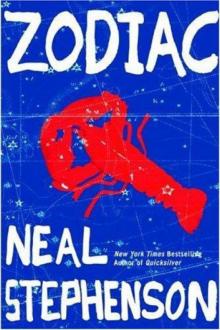 Zodiac: The Eco-Thriller
Zodiac: The Eco-Thriller The Mongoliad: Book One
The Mongoliad: Book One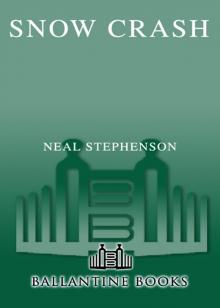 Snow Crash
Snow Crash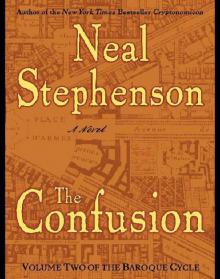 The Confusion: Volume Two of the Baroque Cycle
The Confusion: Volume Two of the Baroque Cycle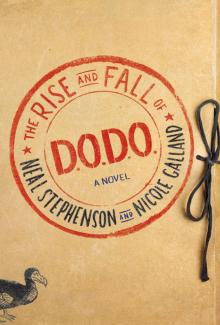 The Rise and Fall of D.O.D.O.
The Rise and Fall of D.O.D.O. The Diamond Age: Or, a Young Lady's Illustrated Primer
The Diamond Age: Or, a Young Lady's Illustrated Primer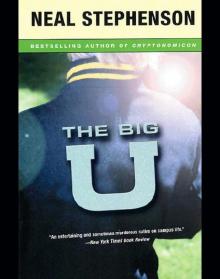 The Big U
The Big U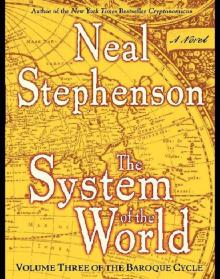 The System of the World: Volume Three of the Baroque Cycle
The System of the World: Volume Three of the Baroque Cycle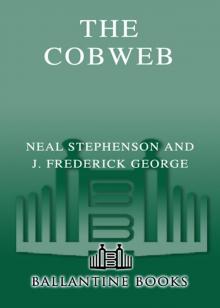 The Cobweb
The Cobweb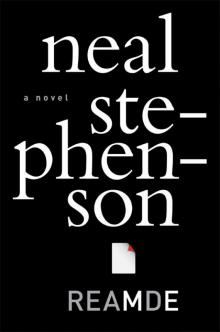 Reamde
Reamde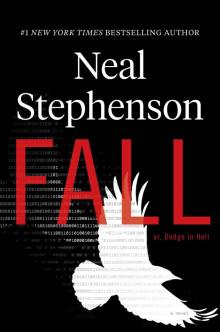 Fall; or, Dodge in Hell
Fall; or, Dodge in Hell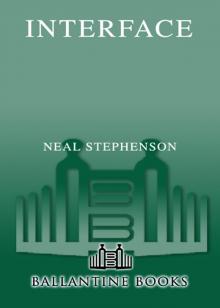 Interface
Interface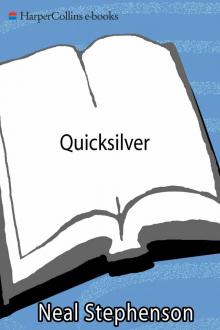 Quicksilver
Quicksilver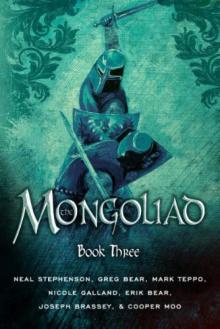 The Mongoliad: Book Three
The Mongoliad: Book Three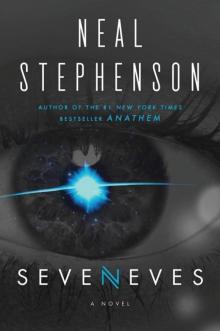 Seveneves
Seveneves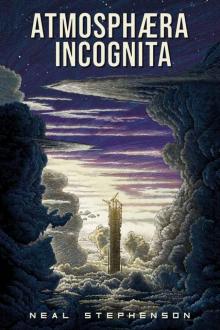 Atmosphæra Incognita
Atmosphæra Incognita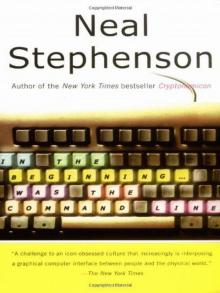 In the Beginning...Was the Command Line
In the Beginning...Was the Command Line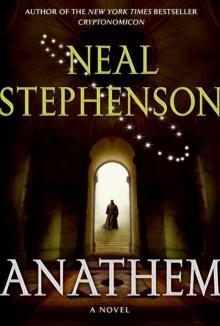 Anathem
Anathem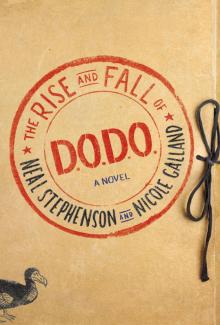 The Rise and Fall of D.O.D.O.: A Novel
The Rise and Fall of D.O.D.O.: A Novel The Mongoliad: Book Two
The Mongoliad: Book Two Diamond Age or a Young Lady's Illustrated Primer
Diamond Age or a Young Lady's Illustrated Primer THE System OF THE WORLD
THE System OF THE WORLD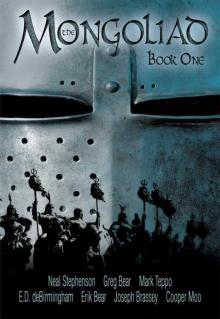 The Mongoliad: Book One tfs-1
The Mongoliad: Book One tfs-1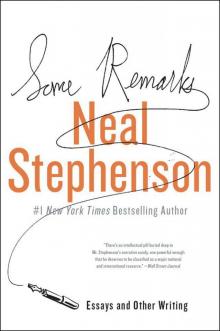 Some Remarks: Essays and Other Writing
Some Remarks: Essays and Other Writing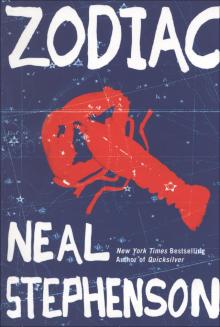 Zodiac
Zodiac Spew
Spew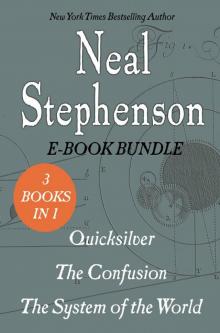 The Baroque Cycle: Quicksilver, the Confusion, and the System of the World
The Baroque Cycle: Quicksilver, the Confusion, and the System of the World The Diamond Age
The Diamond Age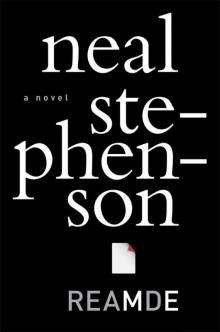 Reamde: A Novel
Reamde: A Novel In the Kingdom of Mao Bell
In the Kingdom of Mao Bell Mother Earth Mother Board
Mother Earth Mother Board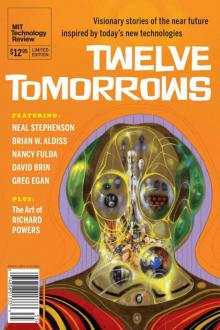 Twelve Tomorrows - Visionary stories of the near future inspired by today's technologies
Twelve Tomorrows - Visionary stories of the near future inspired by today's technologies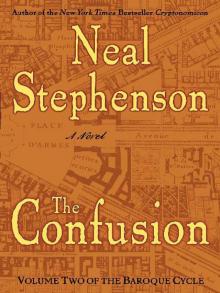 The Confusion
The Confusion The Great Simoleon Caper
The Great Simoleon Caper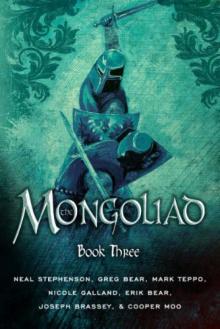 The Mongoliad: Book Three tfs-3
The Mongoliad: Book Three tfs-3